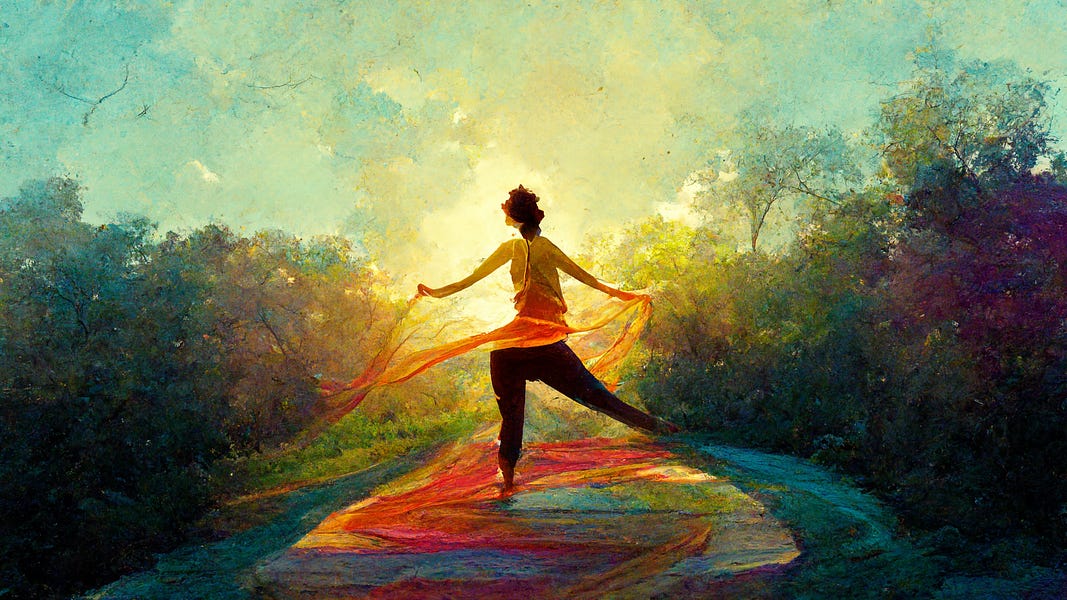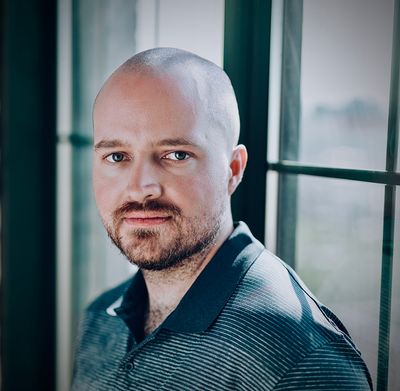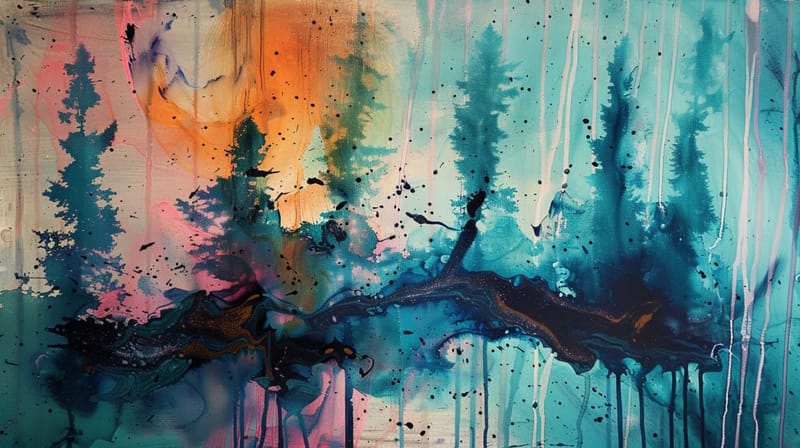Since May of 2022, Sam's gone from no meaningful presence on the internet (he literally had 10 followers on twitter lol), to being one of the more prolific, well-connected dudes I know. And he's done it while ignoring the obnoxious best practices of online marketing, and leaning in on the Ungated principles of self-trust and following the aliveness. So naturally I asked him to document the journey so we could make a case study out of it.
Whenever you walk away from the games everyone else is playing, and you start creating your own path, it's easy to get mired in fear and self-doubt. But I hope Sam's story plants a seed. Great things can happen when you embrace uncertainty, let go of the need to control and know everything, and allow your aliveness to unfold into the world. That recipe has worked wonders for me over the last two years, and it's been incredible to watch it work on Sam as well. So without any further ado, here's his story.
“Dude, just build it for yourself.”
It’s early May of 2022 and I’m sitting on Zoom for my first coaching call with Rob Hardy. I can’t remember how I ended up in his world, but it felt like stumbling out of the cold dark woods and encountering a friendly cabin with a warm fire.
I had joined twitter a few months earlier after a five-year hiatus from social media. I felt a deep desire to share ideas about self-renewal, enjoyable exercise, small business, and regenerative gardening. I wanted to connect with other people interested in these topics, but felt stuck and overwhelmed. I had 10 followers (seriously) and felt like I was pointlessly shouting into the void.
Worse, I was completely unsure of what to share and felt anxious about what others would think. Every time I hit “Tweet” there was a constant undertone of tension and insecurity. I saw some people growth hacking and building polished personal brands, and others mindlessly consuming random jokes and shitposts. I knew I didn’t want either, but wasn’t sure if a third path existed.
It was when I tried to explain this uncertainty that Rob replied: “Dude, just build it for yourself. Create a space where you want to hang out and the others will find you.” He then launched into a passionate explanation of oasis building, operating from the inside-out, subverting the status quo, and marketing non-coercively. My head was spinning but I knew one thing: I felt deep connection to the idea of a digital oasis, and knew I wanted to build my own.
As our call was wrapping up, Rob shared that he was about to run a pilot cohort of a week-long experience he was calling “The Arena” and asked if I wanted to join. I’ve never said yes faster.
That week-long experience proved to be fertile ground, and the seeds Rob planted began to sprout. It gave me a space to share some ideas that felt authentic yet fragile and have a handful of internet strangers earnestly engage and cheer me on. The feeling was indescribable. The positive feedback from the dozen people in that first round gave me concrete proof that sharing my ideas could feel good, and that others might genuinely care. The experience gave me just enough belief to push through the resistance of putting myself out there more publicly. After that, I started sharing more regularly on Twitter.
It’s wild to look back over the last six months and see how little of it was planned. So I thought I'd use this essay to revisit a few specific moments, and make sense of how the journey unfolded. It feels important to share concrete examples of the challenges and insecurities I faced, and how I worked through them. Plus, it turns out to map really well onto the ideas Rob shared in that first call.
Building from the bottom up
One of my biggest barriers was what specifically to share. I felt this pressure to figure out a few things to focus on and not make it too personal. Rob encouraged me to stop trying to think my way into the “right” strategy, and instead run little experiments with whatever felt alive.
So one afternoon in June, while my 4-month-old daughter was napping, I looked out at my suburban garden and thought a few others might be interested in my experience building it. I slapped together a thread of experiences, lessons, and photos documenting my journey. I quickly posted it and went to soothe a waking baby.
When I logged back in, I saw that an early follower (and now friend), Kristen Haaf had retweeted it. Even cooler, a bunch of her followers had started commenting and retweeting. The next two days were a blur. When you only have 40 followers, it's hard to imagine how something can take off. Yet somehow that post ended up getting over 200 retweets, 1500 likes, and 200k impressions. My followers went from 40 to over 400 and I had an entirely new set of anxieties on my hands.
In 2020, I started to convert our 1/4 acre yard into a food forest.
— Sam Sager (@sc_sager) June 15, 2022
I had no experience gardening but loved the idea of growing our own food, bringing more life around us, and deepening my connection to nature.
Sharing a bit about the journey and will add as things evolve:
I found it overwhelming to have my followers grow so significantly and rapidly. Every fear and uncertainty came roaring back: “I don’t want to be Suburban Garden Guy.” “What will all these plant people think of my ideas on exercise, or nerdy book recommendations?” “Will these new people judge me?”
Yet, at the same time, there was something profound about the experience. I posted something close to my heart, and others cared. Some shared their experiences with starting a garden. Some offered ideas for new things to add. And many told me it inspired them to create a garden of their own. There’s something deeply nourishing about sharing something, and discovering that it resonates with so many others.
Operating from the inside-out
The week or so after the garden post was strange. It felt like someone handed me a microphone and turned the volume up. Looking back, it’s funny to think about how little the new followers actually cared about what I shared next versus how much additional pressure I felt. But at the time the stakes felt high.
So I once again leaned on Rob’s advice: Double down on your unique interests. Allow whatever is alive within you to come out. Participate in the conversation. Don’t try to niche yourself into a box.
The thing that was most alive was an observation about how I was seeing the Taoist idea of “non-doing” all over the place. Not just in my own life and work, but in the work of many people I admired. It felt like an interesting observation to share, but it also created a ton of resistance. Not only was it a bit esoteric, but I was going to provide a commentary on other people's work. “What if they didn’t agree?” “What if they think I’m tagging them to ride their coattails?” “What if they think I’m a fraud for talking about this”? The inner critic ragged on until I said fuck it and fired off the thread.
semi-serious question:
— Sam Sager (@sc_sager) June 20, 2022
are we all just rediscovering and reapplying the wisdom of the Tao Te Ching and the power of "non-doing" in different domains?
it's bubbling up a lot in my own work and I seem to be stumbling upon it everywhere
The ensuing response and dialogue was even more rewarding than the garden thread. It felt like a cozy late-night party back in college where a bunch of friends nerd out on philosophical ideas. People riffed on my observations and shared their own perspectives. It was the opposite of everything I feared. I realized how each idea we share is an invitation for others to join us in an ongoing conversation. Yes, it’s scary to be seen, but it’s also a chance to see others. To give words to an experience, a feeling, or a thought that people can connect with.
Cheerfully subverting the status quo
One of the main reasons I wanted to start sharing online was to contribute ideas around how to make exercise more enjoyable. It kills me that so many people view fitness as just something they should do, or even force themselves to do it while hating it. Yet, this is where I faced the greatest resistance.
The fitness industry is full of so much noise, and so many people telling others what they have to do. A lot of it preys on people’s insecurities, and centers around advice that makes people feel inadequate. It’s sad. The core of my message is the opposite. Instead of looking to others to tell you what to do, you’ll find the answer within. Yet, I felt deeply uncomfortable participating in the online conversation around fitness.
Not surprisingly, given the parallels between the fitness and marketing industries, Rob has a strategy for this as well: cheerfully subvert the status quo by focusing on embodying what you want to see. Be the change you want to see in your corner of the internet, and have fun with it.
This has been a slow journey that continues to unfold. At first, I just sprinkled in examples from one own life on how I embrace these ideas. Then I started to subtly push back against the common narrative that we need others to tell us what to do. Eventually, the flood gates opened and ideas around embodied exercise, intrinsic joy, strength training, breath, and more poured out. In some ways, sharing about the other topics was a safe warm-up for sharing these more fragile and vulnerable ideas.
Surprisingly, I no longer even think that much about the status quo. Rather, I invest energy in creating a small corner of the internet where people can encounter something completely different. An oasis where people can have a felt sense of the joy of exercise and the power of embracing fitness from within.
Chasing the aliveness to the edge of my comfort zone
The deeper I go into Rob’s world, the more I believe these are all different strategies to play with the tension between two intentions: chase the aliveness within and go to the place that scares you. It’s about developing your ability to listen to what you truly want to create, instead of allowing others to dictate your desires and goals. It’s about having faith to trust your own direct experience, and follow what’s true and alive, especially when it takes you into unknown territory. When we do this, the world opens up in beautiful, unpredictable ways.
As I got more comfortable sharing on Twitter, I felt a strong desire to explore these ideas in more depth. So I started a Substack to write long form essays, along with a podcast to discuss the themes with others. I began by creating a list of a bunch of topics that I wanted to write about. Yet, none of the things I wrote at first were on that list. Instead, something pulled me towards more personal stories from my life. Publishing these felt uncomfortable and vulnerable. And also deeply cathartic.

Finally, after three months, I felt an energy to write the essay that had been staring at me from the top of the list. It was time to share something substantial about embodied and intuitive exercise. Over the next few weeks, I poured my heart into the piece. This was my chance to consolidate and express everything I’ve learned about fitness over the last decade. But I also poured all of my anxiety and imposter syndrome into it. The result was a behemoth that tried to say everything and only succeeded at leaving the reader overwhelmed and disoriented.
I knew it wasn’t working, but I was in too deep to figure out why. I sent it to Rob for feedback and nervously joined a call to discuss. After confirming that it wasn’t good, he said something I’ll never forget: “Stop trying so hard to prove what you know. All this stuff is just getting in the way of your goal of inviting people to reimagine their relationship with exercise.” 🤯
By reconnecting me with my core intention, Rob helped me unlock the full potential of the piece. I cut the essay in half. I let go of the need to prove how smart I was. The words began to flow and I felt a deep pride in the essay that emerged.

The fact that it seems to have resonated with so many people just makes the experience even sweeter. The tweet with the link got spread to over 30,000 people, and the essay got thousands of views. I stumbled across it being shared on Reddit and in some of my favorite newsletters. To this day, people will randomly reply with it on Twitter to people exploring similar ideas.
I attribute the success it had entirely to waiting until it felt like the moment when it had to be written and listening to Rob guide me back to the place of aliveness within. It taught me the power in wrestling with our insecurities and the value in asking for help.
Marketing non-coercively & trusting myself
You can probably tell by now that i’m not driven predominately by followers, engagement, or short-term results. I’m in it for the long run. I’ve found a collection of things I love doing and want to be able to keep doing them. My hope is to spend the next 20-plus years building an oasis of intuitive fitness, non-doing, self-renewal, and whatever else bubbles up.
There's still a voice in my head that says I should niche down, and make work more focused and legible. That's why I love Rob’s idea of marketing non-coercively because it points towards trusting yourself, and trusting others to decide what’s valuable and alive to them. And after six months, I've come to trust that this approach, though it feels less certain, isn’t incompatible with the growth outcomes that many people care about.
Yes, it’s slower than growth-hacking and hyper-niching your way to an audience. But that’s a feature, not a bug. The pace creates space for serendipity. By experimenting and experiencing I’ve been able to deepen my understanding of what I actually want to create. I’ve discovered new paths that I couldn’t previously imagine.
There's one other interesting thing that's happened along the way. This whole process seems to be fertile ground for self-discovery and self-renewal. It sounds pretty absurd to claim that sharing on Twitter created a significant transformation within me. But here we are and that’s the truth.
Each time I hit tweet or publish, I was facing my fears. Instead of looking for someone else to tell me what to share, I looked within. Instead of letting insecurities hold me back, I threw my ideas into the arena. I opened myself up to the eyes of others and accepted the possibility of judgment.
And what came back was beautiful and nourishing. People cared. We connected over shared experiences and interests. I built real relationships just by authentically showing up as myself. I learned that so much good comes when I trust myself and my own experience.
This lesson has rippled across my life and I now notice how much more deeply I trust myself to navigate small daily actions and even the large decisions of life. More to come on this evolution in a future post.
What's On The Horizon
The most exciting piece of this journey is developing comfort with not knowing exactly where it’s going. I’ve felt a shift from planning and controlling to exploring and unfolding. I can’t predict exactly what will emerge. I can only trust that I’ll have the capacity to continue to navigate it.
Nevertheless, I have so much more clarity than I did six months ago and it feels valuable to name what I see on the horizon. To call out where I feel the most aliveness, what terrain I hope to cover, and what challenges may arise.
As we enter the new year, I have a gnawing sense that I need to expand my work on Intuitive Fitness into a form that helps more people discovery the joy of exercise. The one-on-one work is powerful but limited in who it can serve. This means translating the experience into workshops, courses, and perhaps even a community. It’s starting a dedicated newsletter to create a playground to deepen the ideas and learning to market these offerings in an aligned way.
At the same time, I know that it’s important to keep cultivating the On Renewal oasis for people to explore change, resilience, and regeneration in themselves, their organizations, and the natural world. This includes refining the podcast, deepening my personal writing, and exploring in-person community building. Rob and I even have a shared vision for one day hosting in-person renewal retreats.
In the past, I’ve struggled with balance. I’d immediately go all in on one thing and burn myself out. In the last year, I’ve realized how much I enjoy a portfolio approach to my work and life. I’m someone who thrives by having different projects to pour energy into. I feel best when I spread my identity and ambition across domains. So instead of rushing to monetize one of these projects to the max, I plan to continue indie-consulting on strategic growth and succession planning. Even this is becoming a place to spread ideas around resilience and renewal.
I recognize this approach creates it’s own set of challenges. I am deeply aware of the need to balance these projects with my personal life, especially my roles as a father and a husband. I sense a tension between the need to push to create momentum, and the value in giving each space to evolve. I feel a desire to commit to them without closing myself off to twists, turns, and even new directions. The future is murky, but I’ve never been more excited to keep walking the path.




